Waterbury, CT Pollen and Allergy Report for Summer 2023
Pollen Allergy Trends in Waterbury, CT
When is pollen lowest in Waterbury, CT?

February
Lowest month total PPM
Avg. PPM
When is pollen highest in Waterbury, CT?

April
Highest month total PPM
Avg. PPM
How does pollen in Waterbury, CT compare to Connecticut?
Waterbury has a lower average PPM than the state of Connecticut.
Waterbury yearly avg PPM:
Connecticut yearly avg PPM:
How does pollen in Waterbury, CT compare to the USA?
Waterbury has a higher average PPM than the USA.
Waterbury yearly avg PPM:
USA yearly avg PPM:
Is pollen worse this year in Waterbury, CT?
Spring 2023 was worse than spring 2022.
Spring 2023 PPM:
Spring 2022 PPM:
Average PPM in Waterbury, CT
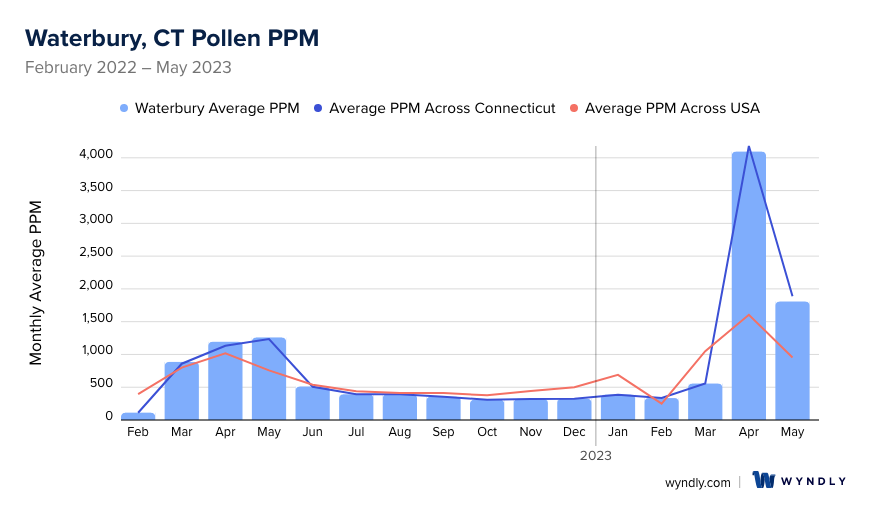

Waterbury, CT Pollen and Allergy Breakdown by Month
Grass
When is grass pollen highest in Waterbury, CT?
April has the highest grass pollen in Waterbury, CT with an average PPM of
When is grass pollen lowest in Waterbury, CT?
December has the lowest grass pollen in Waterbury, CT with an average PPM of
Tree
When is tree pollen highest in Waterbury, CT?
April has the highest tree pollen in Waterbury, CT with an average PPM of
When is tree pollen lowest in Waterbury, CT?
January has the lowest tree pollen in Waterbury, CT with an average PPM of
Weed
When is weed pollen highest in Waterbury, CT?
April has the highest weed pollen in Waterbury, CT with an average PPM of
When is weed pollen lowest in Waterbury, CT?
February has the lowest weed pollen in Waterbury, CT with an average PPM of
Waterbury, CT Pollen Monthly Breakdown by Pollen Type

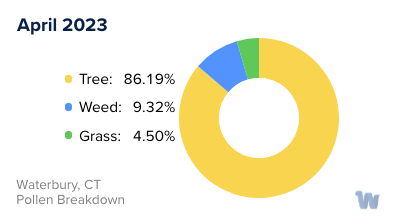
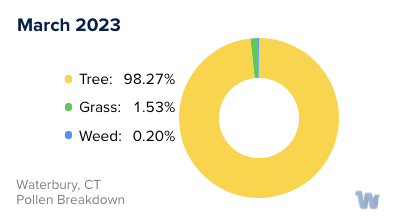
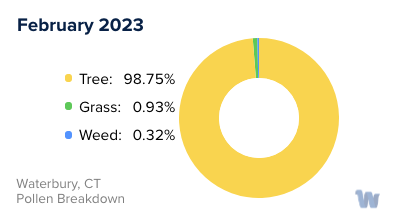
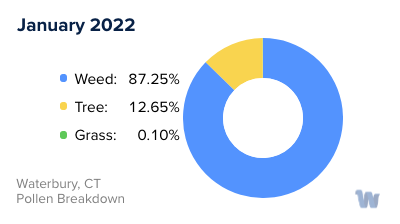
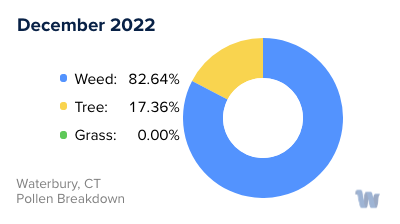

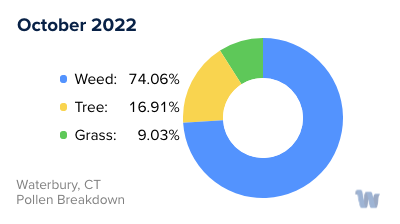



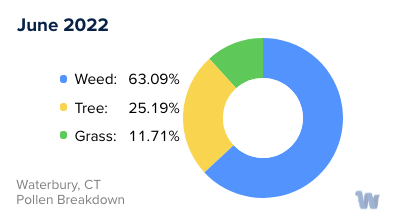
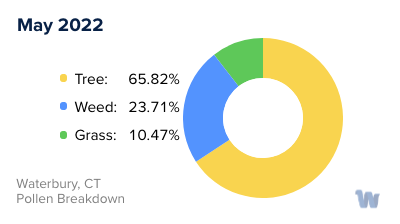

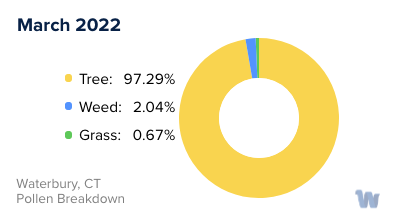
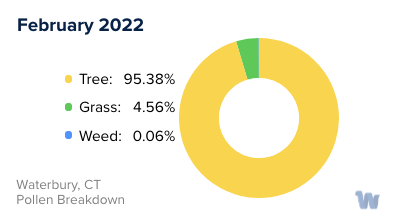
Pollen and Hay Fever in Waterbury, CT
In the charming city of Waterbury, Connecticut, the blooming flowers and lush greenery are a sight to behold. However, for many residents, this natural splendor comes with a price - pollen allergies. When plants release tiny particles called pollen into the air, some people's immune systems react to them as though they are harmful, leading to allergies.
Pollen allergies, often referred to as hay fever, are especially prevalent during the spring and fall seasons in Waterbury. In the spring, the chief culprits are trees. Oak, maple, and birch are common in the area, and their pollen can be particularly aggravating for allergy sufferers. Around this time, you might notice a fine dusting of yellowish powder on cars and outdoor furniture – that’s tree pollen.
As spring transitions into summer, grasses take the baton. Timothy, Kentucky bluegrass, and Bermuda grass release pollen that continues to irritate the senses. While summer can provide a slight reprieve as the grass pollen counts begin to drop, it’s not the end of the pollen season in Waterbury.
Come fall, the ragweed plants start their pollen production. Ragweed pollen is infamous for causing allergies and is remarkably potent; even a small amount can trigger symptoms. In addition to ragweed, other weeds such as sagebrush, pigweed, and lamb’s quarters contribute to the pollen count in the autumn months.
Being mindful of the types of pollen and the seasons in which they are prevalent is essential for the residents of Waterbury, Connecticut. Knowing what to expect can help individuals take proactive steps to manage their exposure to these allergens and maintain their quality of life.

